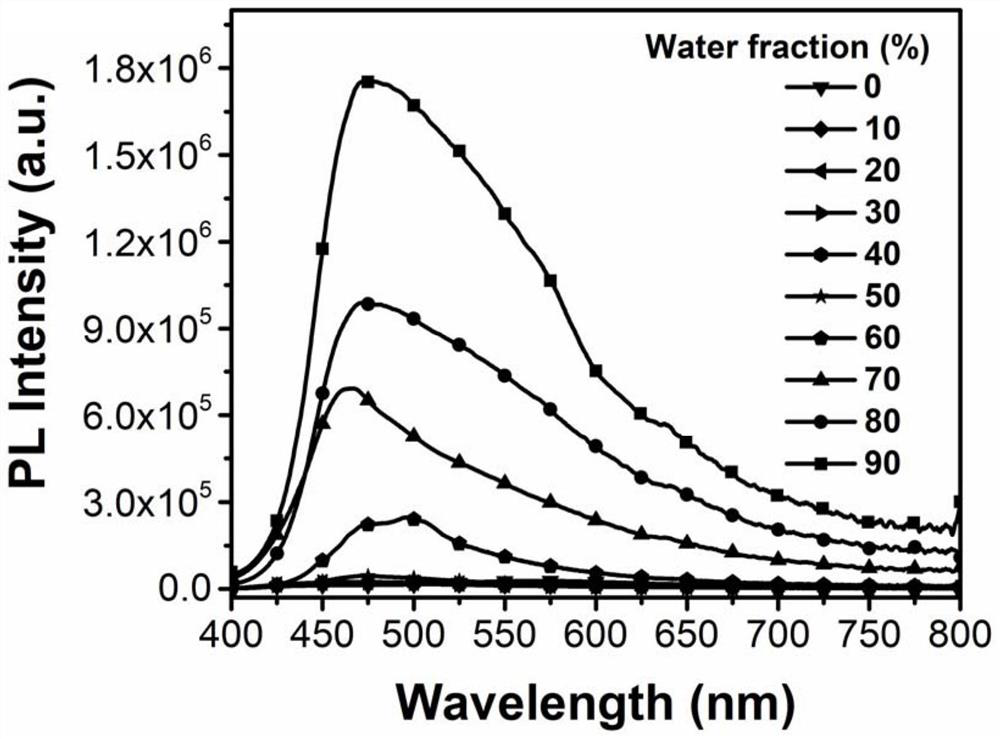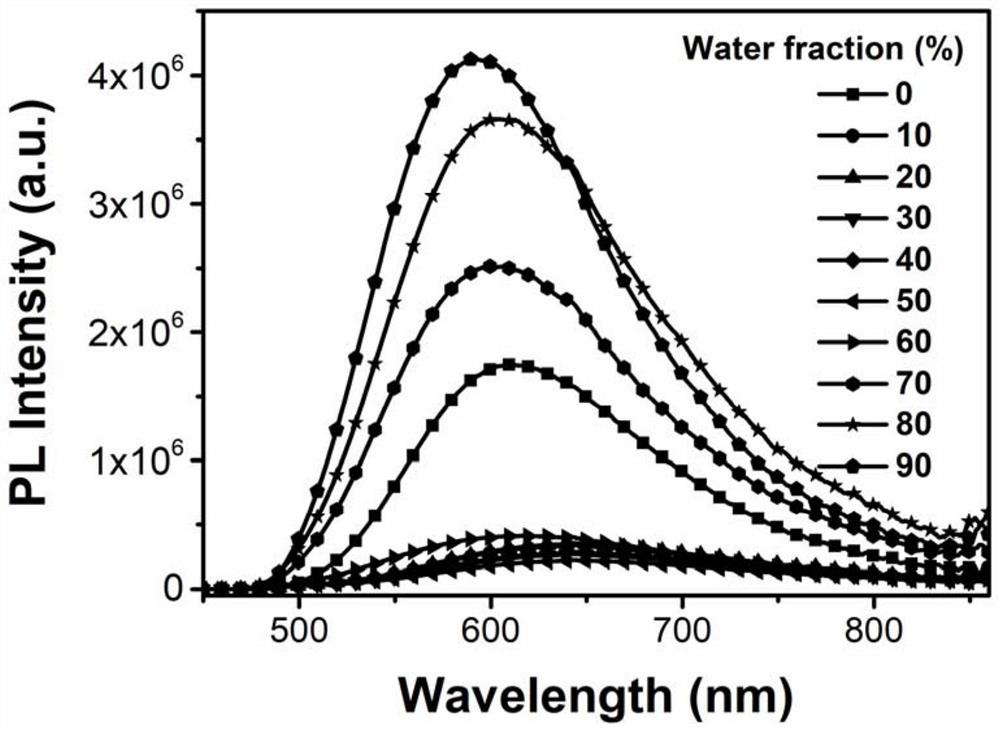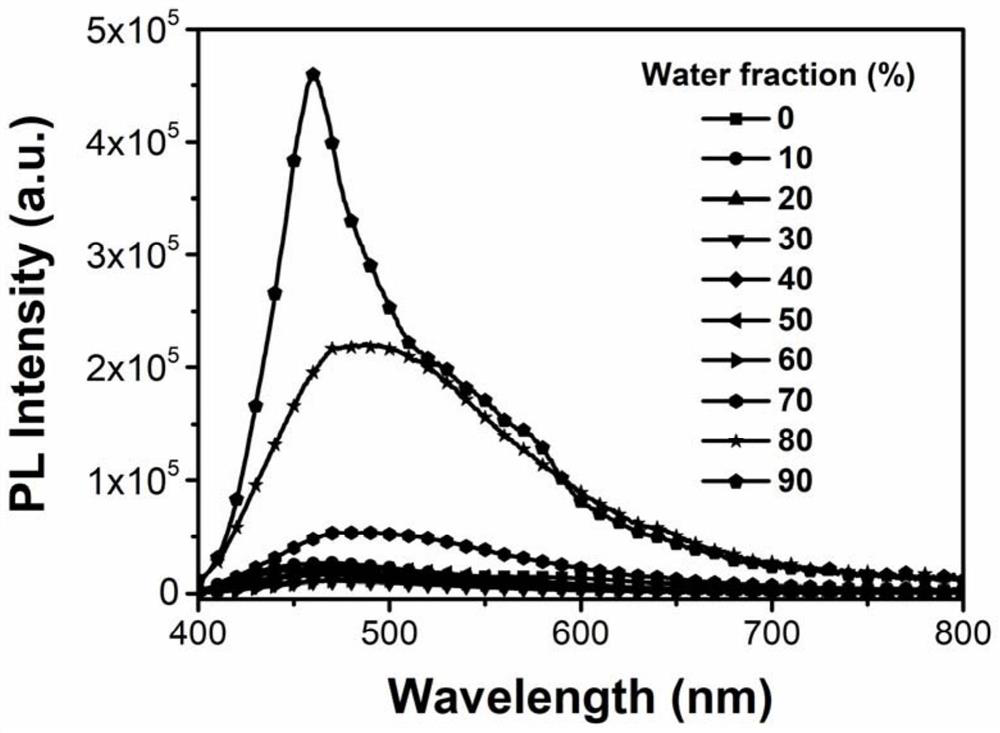Phthalimide organic light-emitting material with aggregation-induced emission and linear force stimulation-light-emitting color change response and application thereof
A phthalimide, aggregation-induced luminescence technology, applied in the direction of color-changing fluorescent materials, luminescent materials, organic chemistry, etc. Effects of non-radiative decay, high chemical and thermal stability
- Summary
- Abstract
- Description
- Claims
- Application Information
AI Technical Summary
Problems solved by technology
Method used
Image
Examples
Embodiment 1
[0036] The synthesis scheme of phthalimide-based organic light-emitting materials with aggregation-induced luminescence and force-stimulation-luminescence color-changing response is as follows:
[0037]
[0038] Synthesis of compound 1
[0039] In a 250mL single-necked bottle, add p-nitroiodobenzene (5.00g, 20.08mmol), carbazole (3.36 g, 20.08mmol), cuprous iodide (764mg, 4.02mmol), sodium hydroxide (4.02g, 100.40 mmol), 1,10-phenanthroline (724mg, 4.02mmol) and 60mL toluene solution, magnetically stirred, nitrogen protection, heated to reflux to 120°C, reacted for 24h, followed the degree of reaction by TLC spot plate. After the reaction was complete, the reaction was stopped, cooled to room temperature, poured into a 250 mL separatory funnel, and extracted with dichloromethane (3×80 mL). The organic phase was washed with distilled water, MgSO4 Dry, filter, and distill under reduced pressure to remove volatile solvents, and the residue is separated by column chromatograph...
Embodiment 2
[0055] Compound 4 in Example 1 was in THF and H 2 The photoluminescence spectrum (excitation wavelength is 380nm) under the condition of different water volume fractions (0%-90%) in O mixed solvent is as follows figure 1 shown. It can be seen from Figure 1 that compound 4 emits weakly in THF solution, and its luminescence intensity increases significantly with the increase of water content. Studies have shown that compound 4 has excellent aggregation-induced luminescent properties.
Embodiment 3
[0057] Compound 5 in Example 1 was in THF and H 2 The photoluminescence spectrum (excitation wavelength is 400nm) under the condition of different water volume fractions (0%-90%) in O mixed solvent is as follows figure 2 shown. It can be seen from Figure 2 that compound 5 has bright luminescence in THF solution, and the luminescence intensity gradually decreases as the water content increases to 50%, and its luminescence intensity increases significantly as the water content further increases. When the water content reaches 90%, the luminescence intensity is much higher than that in pure THF solution. Studies have shown that compound 5 has excellent aggregation-induced luminescence enhancement performance.
PUM
 Login to View More
Login to View More Abstract
Description
Claims
Application Information
 Login to View More
Login to View More - R&D
- Intellectual Property
- Life Sciences
- Materials
- Tech Scout
- Unparalleled Data Quality
- Higher Quality Content
- 60% Fewer Hallucinations
Browse by: Latest US Patents, China's latest patents, Technical Efficacy Thesaurus, Application Domain, Technology Topic, Popular Technical Reports.
© 2025 PatSnap. All rights reserved.Legal|Privacy policy|Modern Slavery Act Transparency Statement|Sitemap|About US| Contact US: help@patsnap.com



